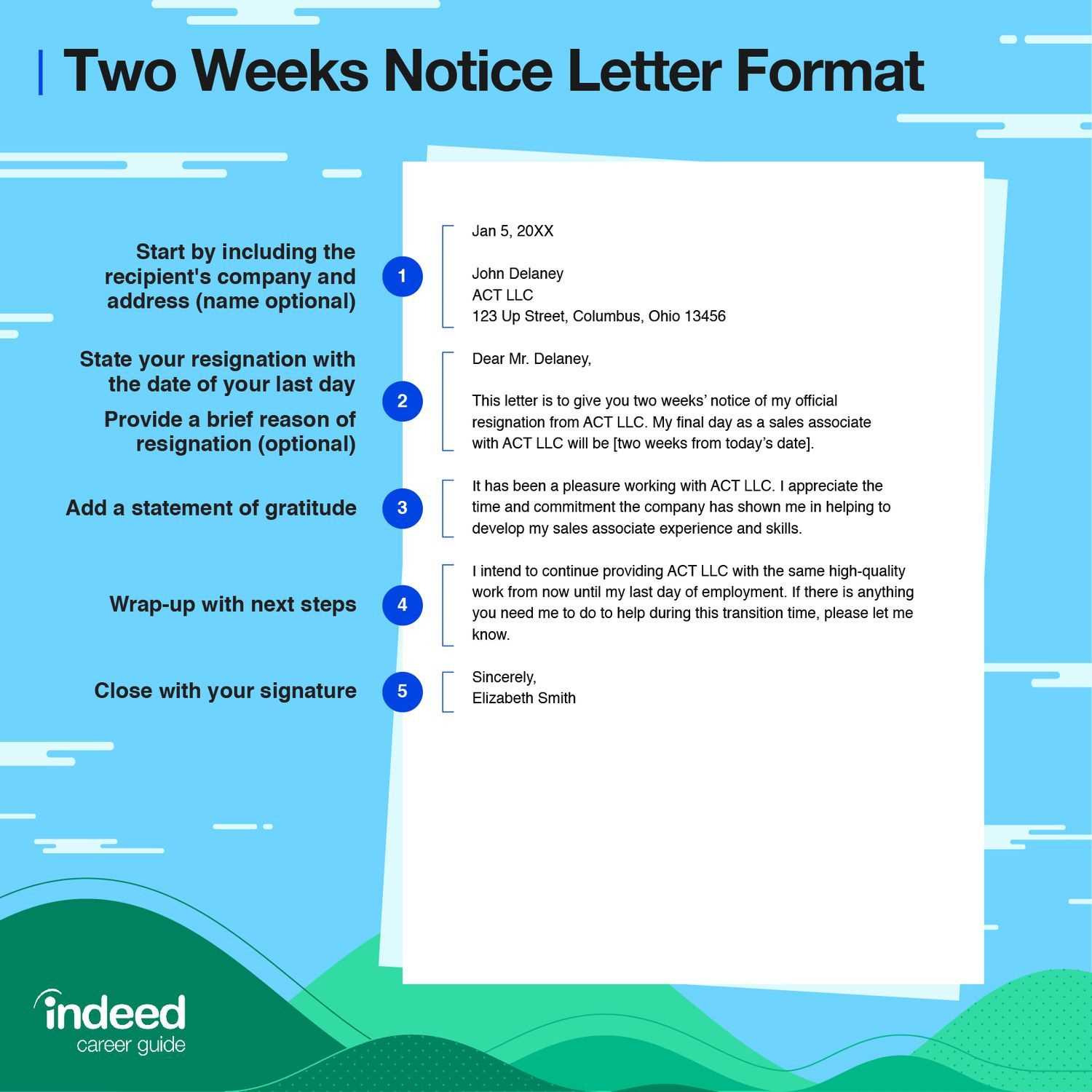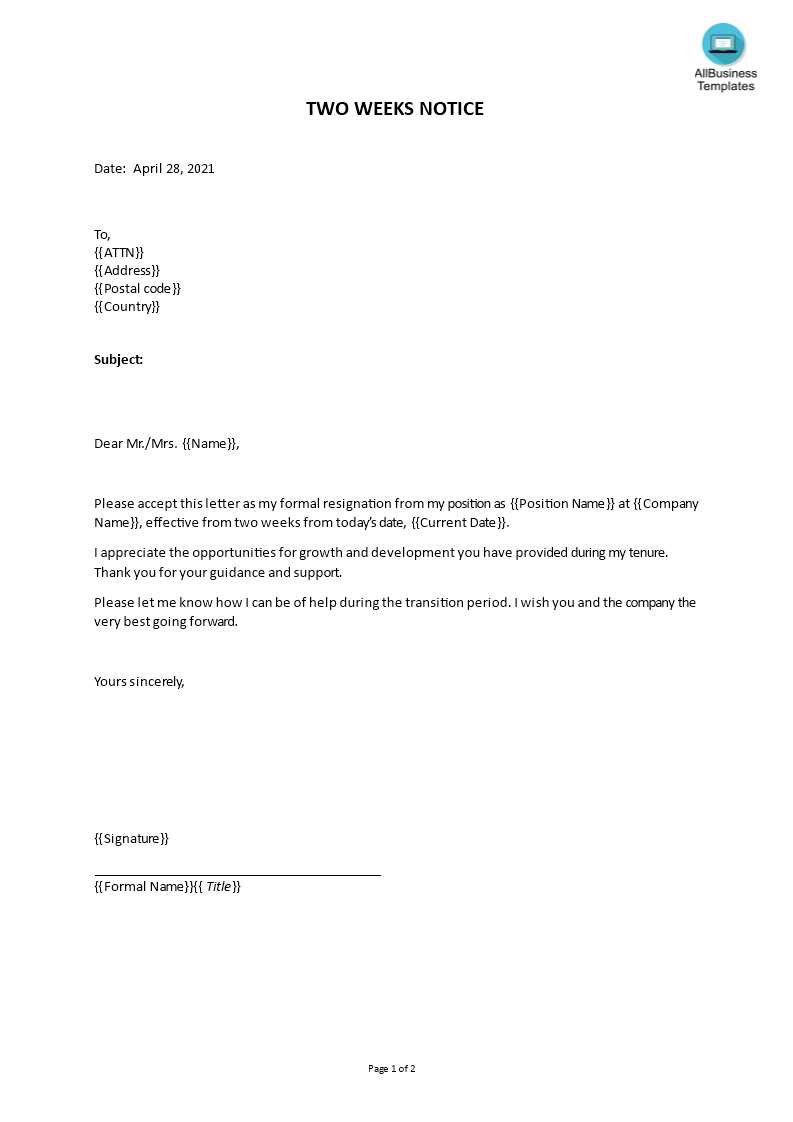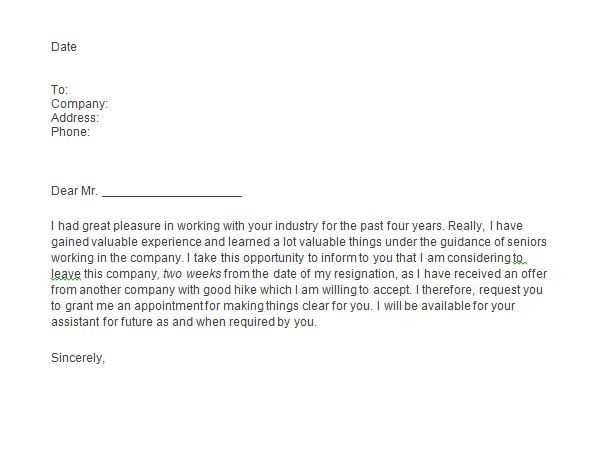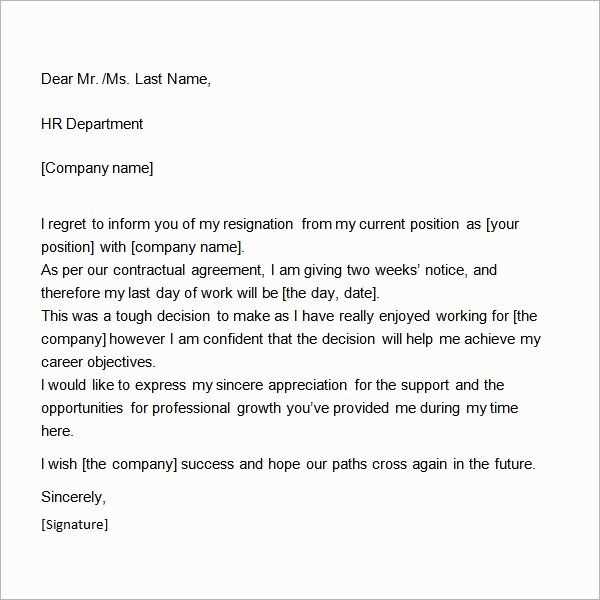Free 2 weeks notice letter template

How to Write a Two-Week Notice Letter
Writing a two-week notice letter is straightforward but requires a professional tone. This document informs your employer that you are resigning from your position, allowing them time to prepare for your departure. Use this template to keep things clear and concise:
Letter Structure
- Subject Line: “Two Weeks Notice of Resignation”
- Greeting: Address your supervisor directly.
- Opening Paragraph: Clearly state your intent to resign and mention the date of your last working day.
- Middle Paragraph: Express gratitude for the opportunity and your experiences in the role.
- Closing Paragraph: Offer assistance in transitioning your tasks and mention your availability for further discussions.
- Sign-off: Include a polite closing, such as “Sincerely” or “Best regards.”
Sample Template
Here’s a simple two-week notice letter template you can follow:
Subject: Two Weeks Notice of Resignation
Dear [Supervisor’s Name],
I am writing to formally resign from my position as [Your Job Title] at [Company Name], effective two weeks from today. My last working day will be [Date].
I have appreciated the opportunities for professional and personal development that I have gained during my time here. I am grateful for the support and encouragement from the team and leadership.
During the next two weeks, I am more than happy to assist with the transition of my duties and ensure a smooth handover. Please let me know how I can help during this period.
Thank you again for the opportunity to work with such a great team. I wish you and the company continued success in the future.
Sincerely,
[Your Name]
Key Points to Remember

- Keep the letter polite and professional.
- Avoid going into too much detail about your reasons for leaving.
- Offer to help during the transition period, even if you’re leaving for a new opportunity.
Free 2-Week Notice Letter Template

A two-week notice letter serves as a professional way to inform your employer about your intention to resign, ensuring a smooth transition. Begin with a clear statement of your resignation, specifying your final working day, and express gratitude for the opportunities you’ve had. Mention your willingness to assist in the transition process, such as training a replacement or wrapping up ongoing projects. Keep the tone respectful and positive to maintain good relations.
Understanding the Purpose of a 2-Week Notice Letter
Providing a two-week notice is a standard practice that allows employers time to prepare for your departure, whether by finding a replacement or redistributing your duties. It also reflects your professionalism and respect for company processes.
Key Elements to Include in Your Notice
Your letter should include the following key points:
- Your intent to resign and the position you’re leaving.
- Your last working day, two weeks from the notice date.
- A brief expression of gratitude for the opportunity to work there.
- An offer to help with the transition process.
How to Customize Your Notice for Various Situations
If you’re leaving for a new opportunity, simply state your reason without going into too much detail. If you’re leaving due to personal reasons or a conflict, keep the tone neutral and focus on your future plans without discussing specifics.
Best Practices for Sending a Two-Week Notice
Always send your resignation letter in writing, either via email or printed form, and deliver it in person if possible. Ensure it is professionally formatted, concise, and free of errors. Notify your employer before sharing the news with coworkers to maintain a respectful process.
Common Mistakes to Avoid in Your Notice
Avoid giving too little notice, as it could harm your reputation. Don’t leave negative comments about the company or colleagues. Refrain from making demands or discussing grievances in your letter. Keep your resignation brief and professional.
What to Do After Submitting Your Notice

Once your notice is submitted, focus on completing your tasks and assisting with the transition. Be prepared for an exit interview, and leave on good terms to preserve professional relationships for future networking.